Everything you need to know about calligraphy
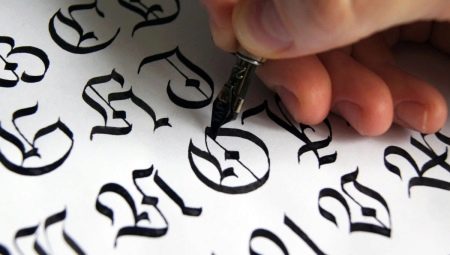
Each of us would like to learn how to write in beautiful calligraphic handwriting. However, have you ever thought about the history of calligraphy, its origins, founders and features of the very first fonts? In this article you will learn all the useful and interesting information about calligraphy, its types and features of teaching the basics of such writing.
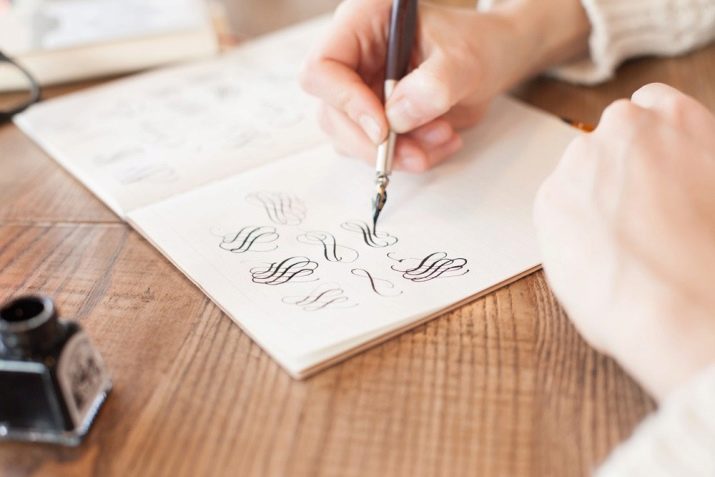
What it is?
Literally from the Greek translation, calligraphy is translated as "writing beautifully", a little later a more popular definition of calligraphy appeared - the art of writing competently and beautifully. Art is the key word in this definition. In every nation, calligraphy was inextricably linked with something sacred, sacred, on which both artistic and vocal activities are based.
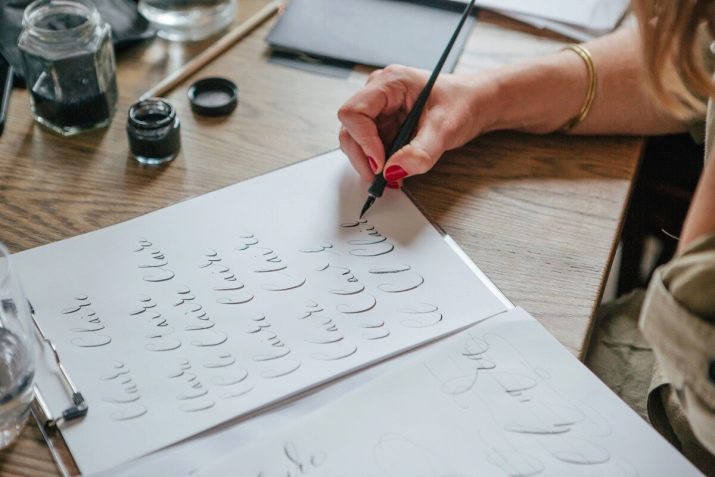
Calligraphy received the greatest connection with the art in the East - in Japan, Korea and China, where it was closely intertwined with nature, folklore, religion and traditions. In many countries where Islam is considered the main religion, calligraphic writing is practically the only means of expression.
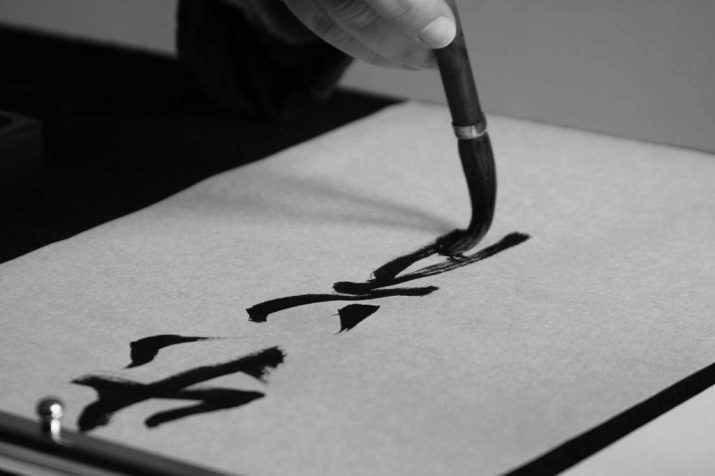
The development and rooting of calligraphy is directly related to the general history of the development of writing, the introduction of new fonts and the appearance of paper. Consequently, the very first preconditions for the emergence of calligraphy arose even during rock painting, having passed a huge time period from cuneiform to the creation of a full-fledged alphabet.
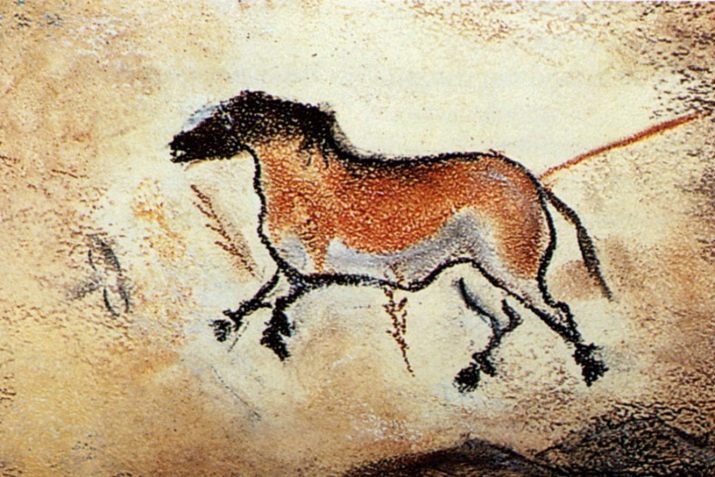
Initially, all common European writing developed on the basis of the Greek and Etruscan alphabets. At the same time, different versions of the interpretation of fonts existed long before the Greek Empire itself.Two types of ancient handwriting are well known - the first was used exclusively in decorating monuments, architectural structures and documents, the second was simpler, everyday and was used in writing books, letters, manuscripts and posters.
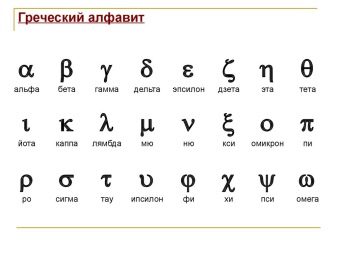
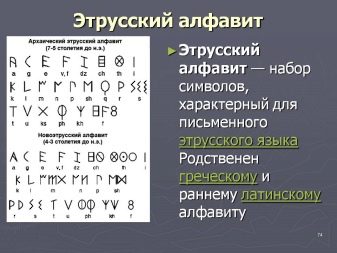
Interestingly, the Greek alphabet was reflected in different ways in individual religions and peoples. For example, the Romans sought to simplify this typeface in order to make it more practical and useful in everyday life. At the same time, Christianity contributed to the expansion of the images of the Greek alphabet, making its proportions more variable and individual in the process of rewriting the Bible.
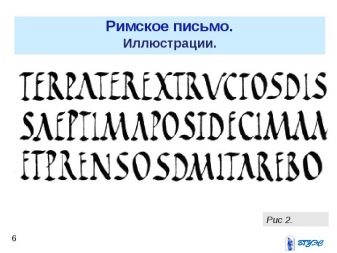

In the 5th century AD, the so-called uncial script began to actively develop, which was distinguished by the fact that all letters in a text or phrase stood separately and did not have contact with each other. Here, the so-called drop caps appeared - capital letters at the beginning of the entire paragraph, which took from 2 to 5 lines in height. Soon, this version of the font began to spread throughout Europe., which led to the creation of its many variations based on local traditions and rules.
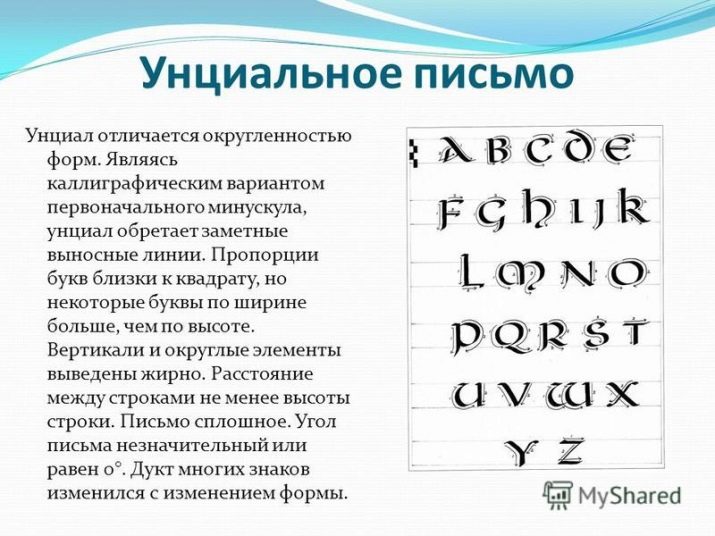
Charlemagne had a significant influence on the formation of typefaces at that time. It was he who, in about the 8th century, made the decision to create one common typeface with uniform rules and functions for major and small letters. This solution also assumed that the letters in words and phrases would be written together - this was the first attempt on the path to simplifying the connection between letters and words, as well as the letter spacing. This font received the iconic name - Carolingian minuscule. It is noteworthy that some of the rules for writing this font have survived to this day in our written language.

Since the 11th century, the so-called Gothic style has gained wide popularity in almost all of Europe., who became the "father" of the Gothic script itself. This new typeface offered hitherto unknown uncial proportions and shapes, replacing all the angularity and straightforwardness of Greek characters. These forms existed until the very Renaissance, where they were replaced by the already classical Greek ones. Petrarch, who is considered the pioneer of European calligraphy, called these symbols antique.
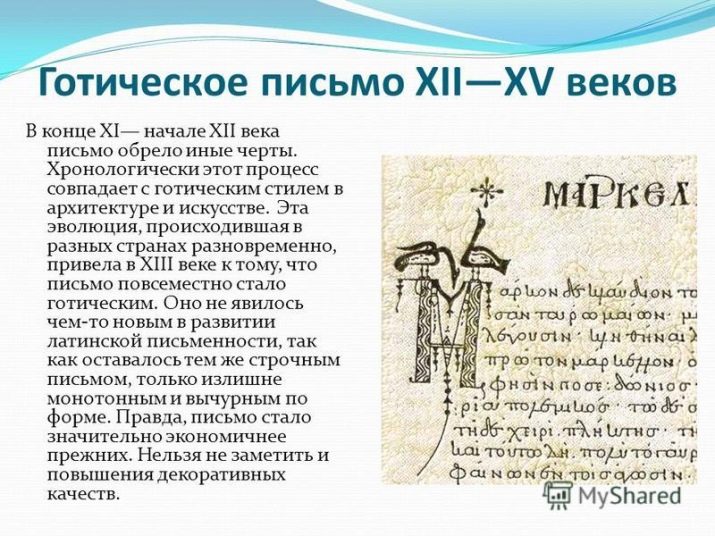
Some might think that the creation of the printing press in the 15th century inevitably led to a decrease in the popularity of written fonts and calligraphy itself., However, this is not quite true. The fact is that all the tools and prints in the machines were created solely on the basis of block letters. At the same time, printing presses did not gain popularity immediately - such a letter was not affordable for everyone and took quite a lot of time.
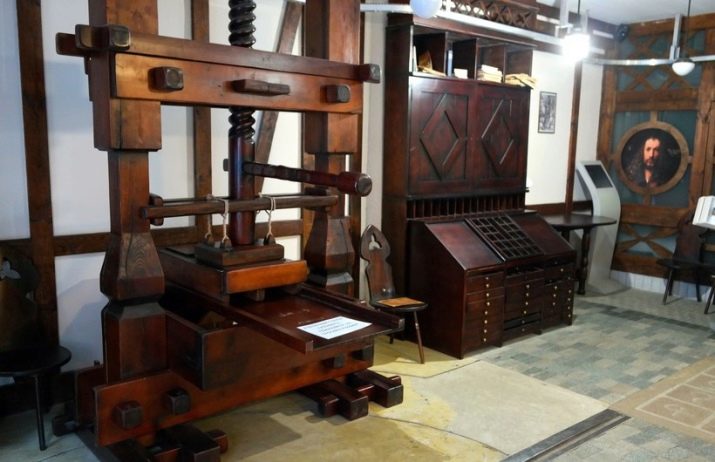
From about the beginning of the 17th century, when printing presses gained great popularity in Europe, calligraphic fonts began to gradually move away from their direct function. They have become a tool in the design of elements of writing and decor. Handwritten books of that time, created thanks to calligraphic fonts, were distinguished by greater originality and high cost - they were bought only by rich and well-to-do people striving for art.
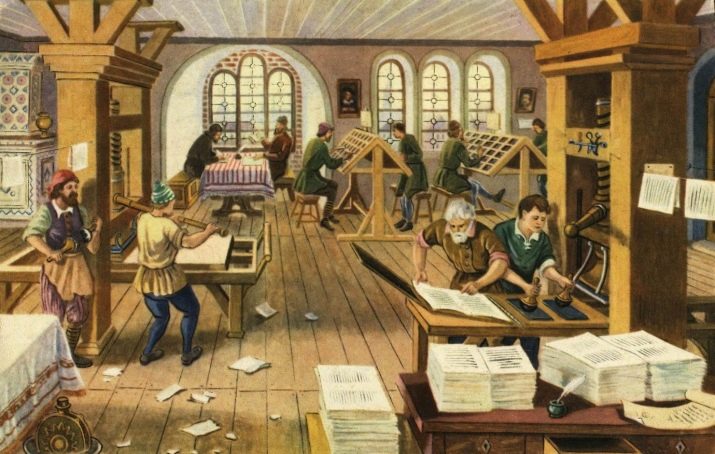
Calligraphy did not disappear in the 18th-19th centuries, and official documents continued to be written with the help of its fonts., love letters, decrees, invitations, cards, theater posters. At that time, there were still people who considered the revival of calligraphy their vocation. William Morris and Edward Johnston can be considered a striking example of such personalities.


If until the 17th century calligraphy remained an art of self-expression not only through the text itself, but also through the way it was written, then today this function has practically disappeared against the background of the creation of high technologies. Nowadays, when any computer program for working with text can create beautiful fonts, calligraphy has become something like a beautiful cover in which text is clothed.

Despite this, even today there are still people who are ready to defend this art. Moreover, many experts compare each artist to a calligrapher, as these arts are extremely closely related to each other. In addition, there are special styles of painting, in which not any specific images or images come to the fore, but strokes, patterns and symbols with deep meaning - just like in calligraphy.

What is it used for?
For people who were born in the twentieth century, a beautiful, competent and harmonious handwriting was the standard of a correct and healthy personality. Even then, there were a large number of professions that required from the performer not only perfect literacy, but also beautiful calligraphic handwriting. Every year, interest in these professions faded away, some of them completely lost their need due to the development of the machine industry and computer technology.
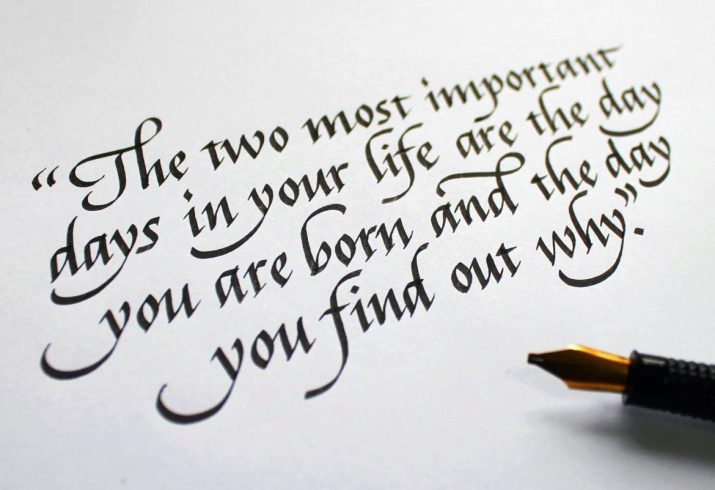
If even before the beginning of the XXI century, all documents in the institutions of the CIS countries were issued and issued precisely in writing (where the calligraphic handwriting at the heart of the document was part of the ceremony - the issuance of marriage documents or passports, birth certificates), then very soon the market was conquered by printed documents with fancy digital fonts.
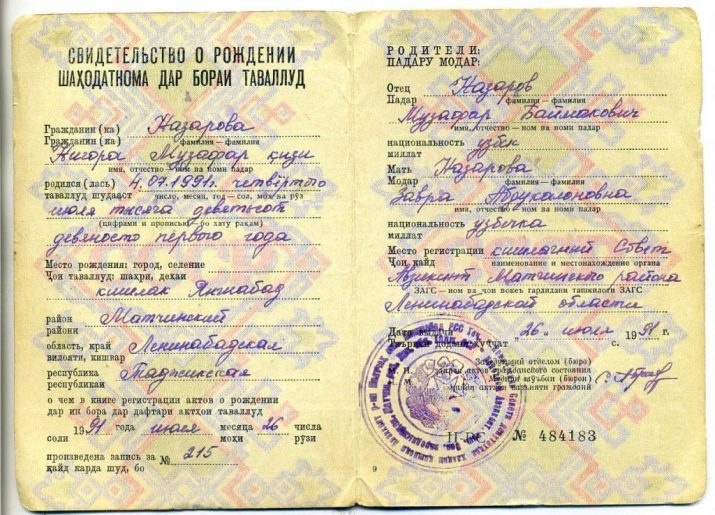
Based on this, one would think that calligraphy has completely lost its relevance in the modern world. However, it is not. There is still work for experienced and talented calligraphers. They ask for their help in composing romantic letters, decorating postcards, creating letters, posters, even decorating home interiors and drawing up official logos. Modern technology has enabled many calligraphers to enter the digital marketplace - today they have become graphic designers and architects.
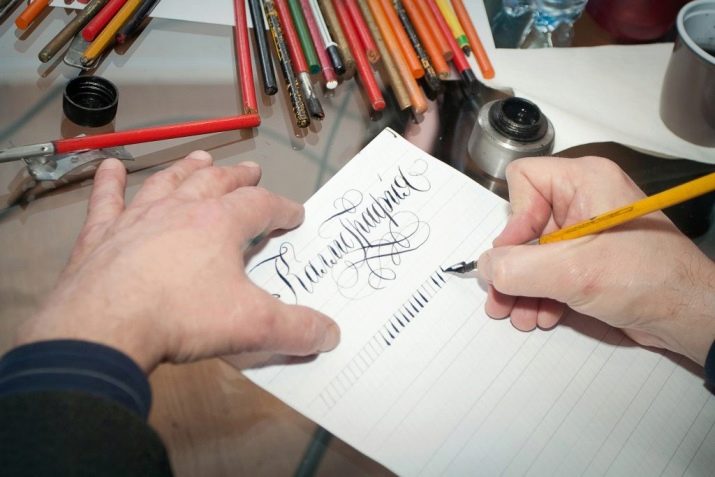
Each of us encounters calligraphy every day. Most of the religious writings were compiled precisely with the help of the works of calligraphers, the historical manuscripts that we see in museums and at exhibitions have also been restored by experienced calligraphers. Even modern youth graffiti art often carries the rudiments of calligraphy.
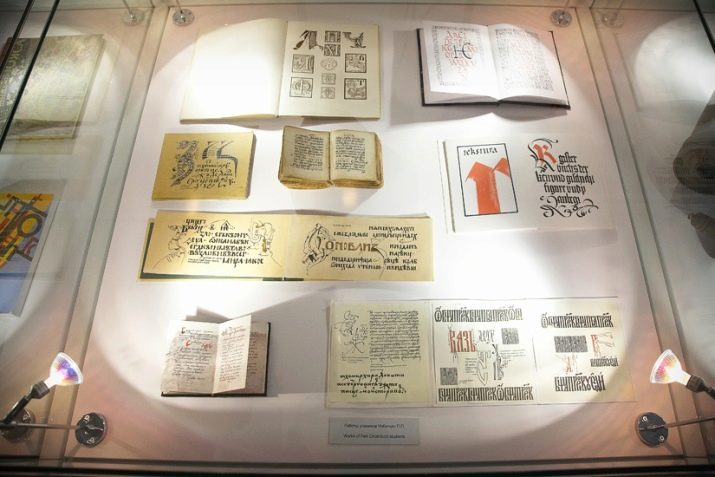
Despite the fact that today most of the documents are compiled with the help of a computer, some of us still have to deal with written papers. It should be said right away that calligraphy implies not only beautiful, but also correct writing. - thus, any text written in any kind of calligraphy will be clear and legible a priori. This issue will be especially relevant for those specialists who have constant contact with people and figures: doctors, police officers, merchandise experts, accountants, accountants. The correctness and legibility of handwriting in these professions directly affects the overall performance.
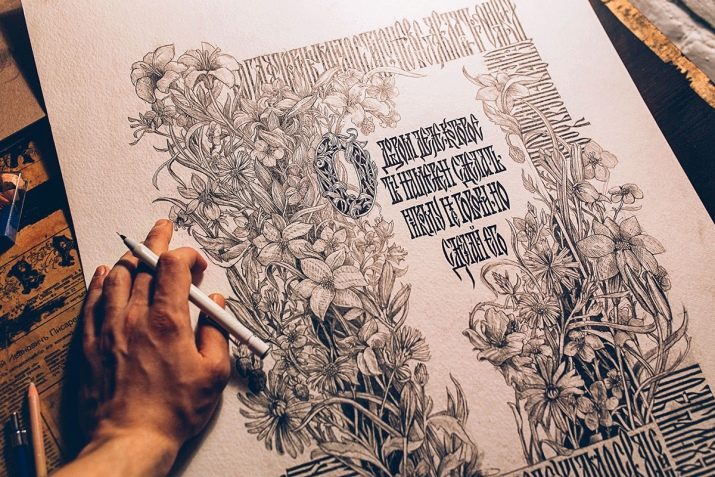
Experts believe that calligraphic activity stimulates brain activity, developing attentiveness, multitasking and concentration in a person. In the case of writing with an ordinary ballpoint pen, we practically do not need to think about its movements - it glides on the paper, depicting symbols and letter combinations that are already familiar to us. But, when it comes to calligraphy, a person has to follow every movement, stroke and directionto achieve the perfect result. Some experts claim that calligraphy fosters discipline and pedantry in a person, helps to bring things to the end. The effect of calligraphy on the human brain has been compared to playing the violin, but the latter requires talent, and the former can be learned by almost anyone.

Fostering discipline and perseverance are not the only tasks of calligraphy. In order to depict a beautiful and unusual pattern, you need to have a significant amount of imagination and imagination.Thus, teaching calligraphy also develops creativity, which is why in some foreign countries it is introduced into school and student programs.
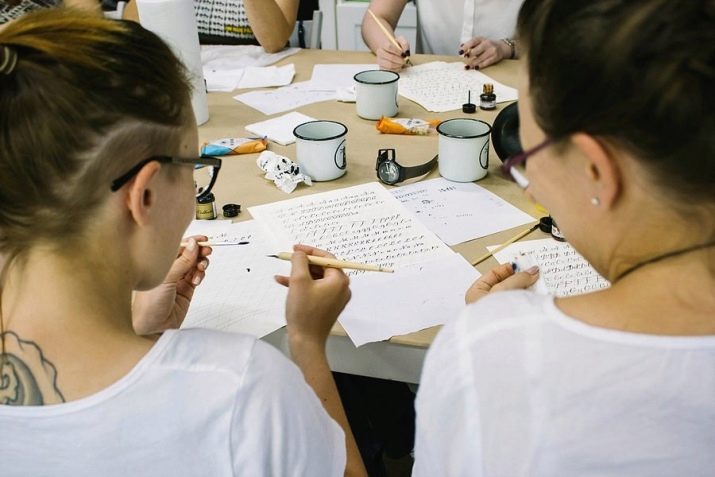
Experienced calligraphers note that calligraphy helps them to relax and distract from anxious thoughts and worries. The maximum level of concentration makes a person immune to external and internal stimuli during the entire work procedure.
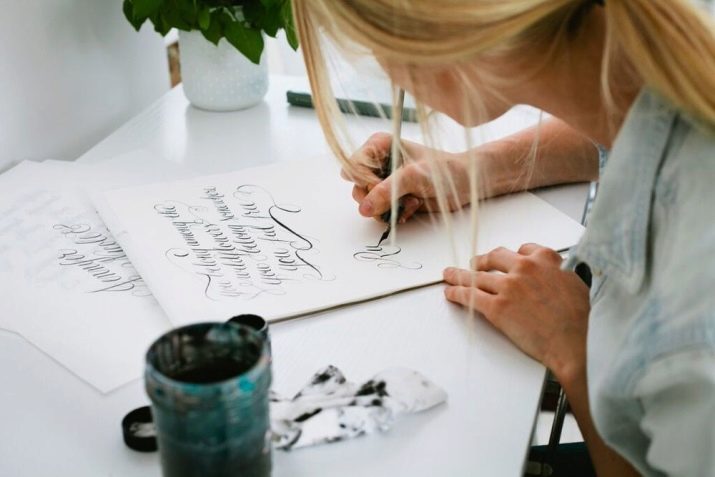
Calligraphy means not only correctness and beauty of writing, but also neatness. This is especially true for adolescents and schoolchildren who leave a bunch of blots in their home or class work. Working with ink encourages young people to be more careful with brushes and nibs, which will have a beneficial effect on the future handling of a regular pen.
Calligraphy also influences the development of fine motor skills. It requires strict adherence to a certain style of writing, in which the hands must clearly follow the pre-marked lines. Calligraphy helps you follow every movement, perfect your finger movements, and cope with tremors in your hands.

Views
Today, there are several types of calligraphy in the world, they differ in the style of writing, the scope of use, as well as the sacred meaning embedded in written symbols.
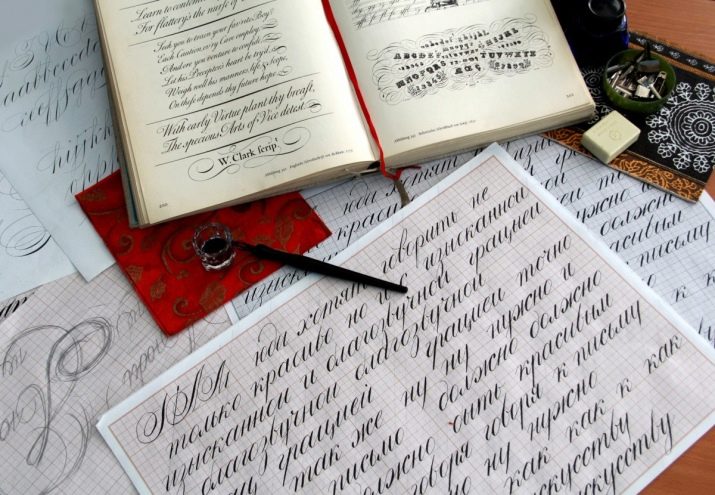
Japanese
It is considered to some extent the standard and inspirer of all modern calligraphy. In Japan, this art appeared at the beginning of the 7th century. Based on some symbols borrowed from China, Japanese craftsmen have created several of their own unique styles. The styles created were much more expressive, expressive and simple. The Japanese sought to introduce into these styles their own sacred deep meaning, which would symbolize not just words, but whole concepts, images or meanings.
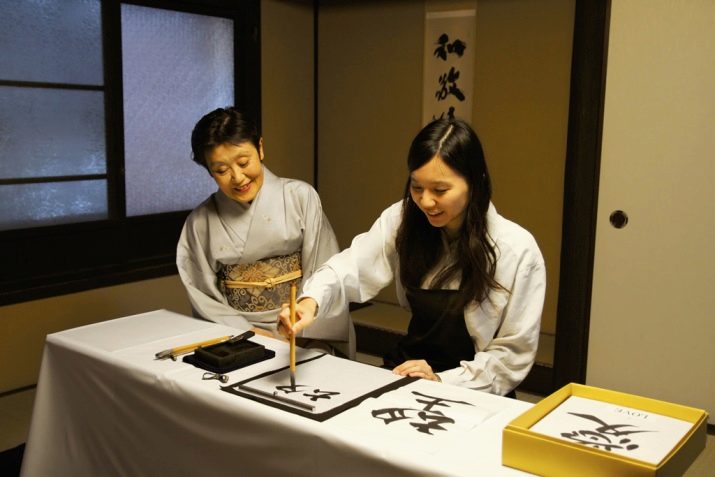
From the 17th to the end of the 19th centuries, new writing styles were actively formed in Japan - kabuki-moji and jo-ruri-moji. Initially, they were used only to compose and decorate theatrical posters of the theaters of the same name - Kabuki and Joruri. Gradually, both styles also took root in Japanese culture and became part of the history of their writing.
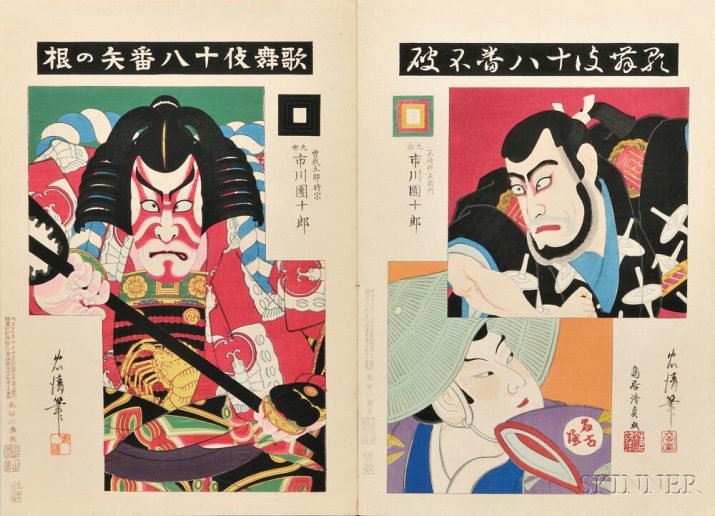
The secret of Japanese calligraphy is that it simultaneously requires its masters to be completely focused, but also to be relaxed at the moment of the execution itself. Simply put, the masters should be internally focused while writing, but the movements of their arms and hands remain smooth and soft. The development of calligraphy here was greatly influenced by Zen Buddhism, some of the techniques of which were based precisely on calligraphy. It was believed that it allows you to meditate more effectively and to know yourself faster.

It is noteworthy that these days have not had a negative impact on Japanese calligraphy. Their entire modern culture is based on ancient symbolic writing, which, in turn, became the basis for the creation of new styles and trends. For example, in the middle of the 20th century, the Association of Contemporary Calligraphy Masters was registered in Japan. This organization is successfully engaged in its business today, each year showing at its exhibitions ancient and modern examples of calligraphic art.

In the second half of the twentieth century, a new stage in the development of calligraphy began in Japan. This trend appeared thanks to the creation of many abstract styles in which hieroglyphs have lost their original meaning. Abstract stylistics has allowed Japanese calligraphers to find more creative and unusual approaches in displaying their thoughts and images. The peculiarity of such techniques lies in the fact that, despite their originality, they retained at their core the traditional methods of using a brush and ink.
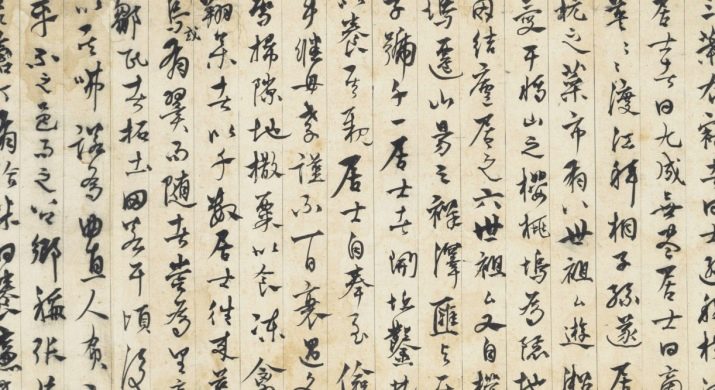
For many modern masters, Japanese calligraphy is a cherished goal, to which they have been going for years.
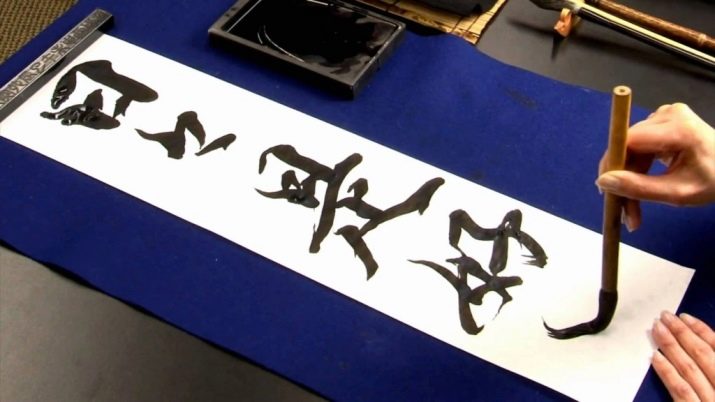
Arabic
In Arabic, this art is called "Khatt" or "Hutut". Just like in Japan, Arabic calligraphy occupies one of the key values in Arabic culture and art. The very first attempts to root calligraphy were made solely on the basis of copying the Koran after replacing parchment with a denser and higher quality material - paper. In that era, almost all manuscripts were rewritten, and the most important - the Koran - was in the forefront.
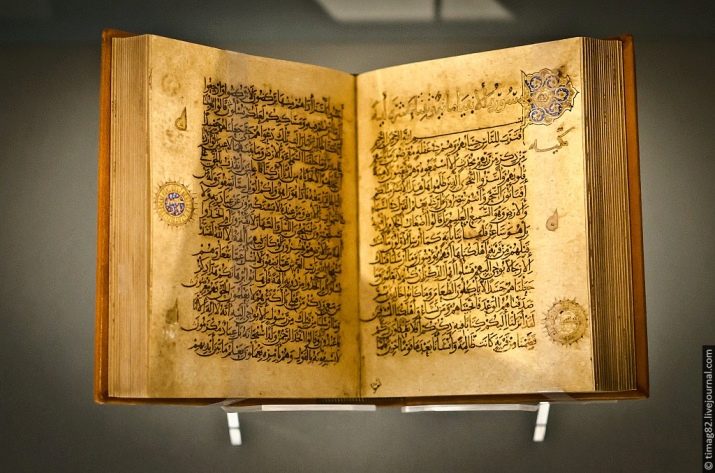
The noble art of calligraphy gave a special and even sacred meaning to all signs and symbols written with it. In the Middle Ages, many of the Arab rulers of that time took the liberty of writing the Quran in their lives, but before that they had to learn the primary rules of calligraphy.

Already in the 9th century, these rulers gathered around themselves and their palaces real libraries with thousands of books, thereby trying to join the divine. Such libraries or centers began to be called "houses of wisdom" or "Dar al-hikma" - in them hundreds of translators, calligraphers and scribes worked daily on the census and writing of books. Because of the close connection between the Qur'an and calligraphy, the Arab people believed that this work elevated them above other people and forgave grave sins.

Together with the census of the Koran using calligraphic fonts, the Arab masters set about censoring books and teachings on medicine, history, and military affairs. A little later, the first collections of poetry and prose appeared, written in excellent calligraphic handwriting. In addition, with the help of calligraphy, drawings, drawings, maps and diagrams were already created in books at that time.
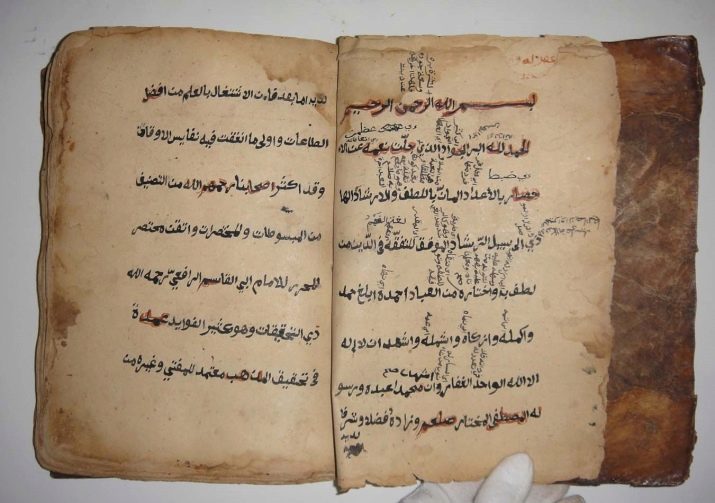
Arabic calligraphy also has its own characteristics. - for example, the Koran, or the main holy book of Muslims, directly prohibits images of people, animals, and also Allah himself. It is believed that this encourages people to worship non-existent or alien gods, as all outsiders do. That is why any images of living beings, even if they have nothing to do with religion, are strictly prohibited in this culture. However, if only symbols or words are used in calligraphy, which are combined into some kind of general drawing of a living creature, this will not be subject to the ban.
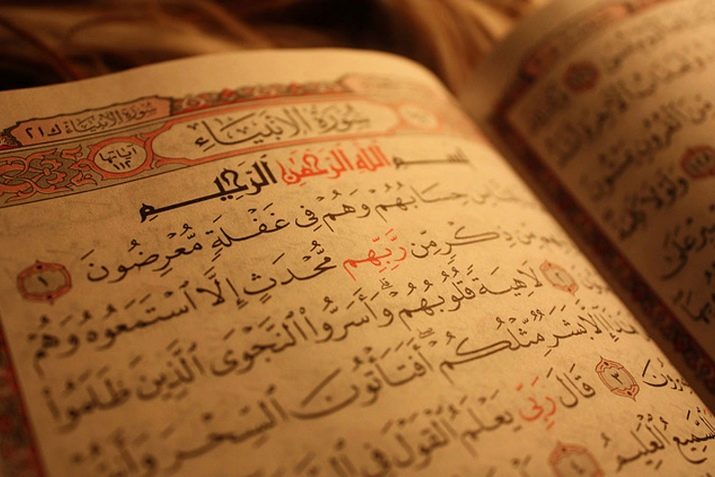
Briefly about the Arabian styles. At the beginning of the birth of calligraphy in the Arab territories, there was only one style of writing - "hijazi". Over time, this style has undergone modernization and changes, thanks to which the modern 6 basic writing styles, also called the "big six", appeared. Each of these styles was used exclusively in a specific area of life: For example, the “divani” style was used only in writing important diplomatic papers and documents, the “nastalik” style is better known as a religious writing style - it was used by a narrow circle of people who have access to complementing the Quran with explanations. The most common style is “rikaa”, which is used only in the domestic sphere.
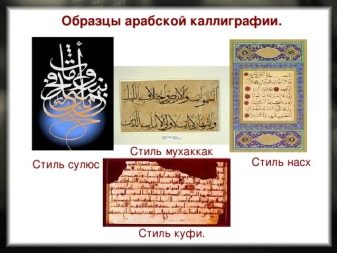
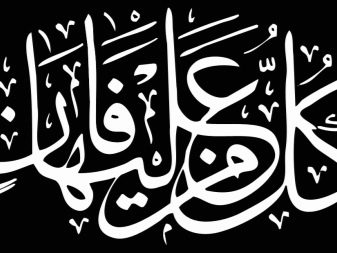
The handwriting style of a particular person could depend not only on the scope of its use, but also on other important factors. The choice of style in this case could be based on the place and time of writing the text or symbol, the color of the ink, as well as on the well-being or beliefs of the master himself. For example, some calligraphers preferred to use only ink that had visited Mecca - it was considered sacred and obligatory for the holy pages of the Koran. With the spread of books on the territory of the Arab states, there was a need for a faster census of books. That is why the preference was soon given to fast writing styles such as ruka.
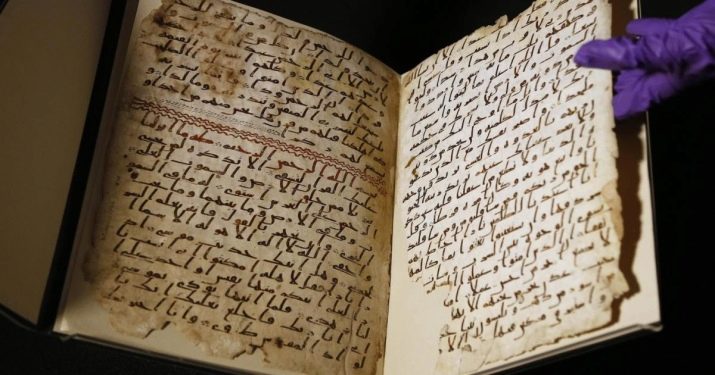
The proportions of the written characters were of great importance in Arabic calligraphy. The fact is that in this culture the art of calligraphy was perceived with the same accuracy as physics or algebra.When writing any words or symbols, a strictly defined height of letters and whole words in a line was calculated. So, depending on the letter used, its length could consist of 2 to 3 rhombuses.
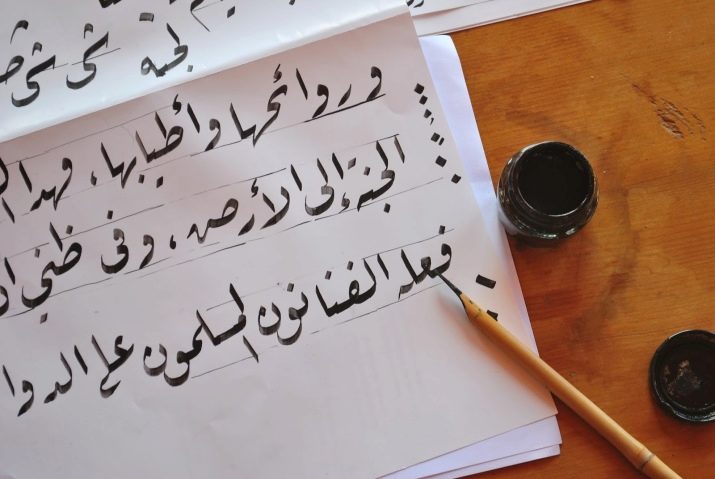
In order to clearly control the size of letters and words, Arabic calligraphers developed a special algorithm by which the length of the entire letter was calculated. The standard and basis for writing words was the first letter of the Arabic alphabet - alif. Outwardly, it is a clear vertical line. The minimum unit of measurement in Arabic writing is considered to be a point, while the height of the alif is 12 points on average, and the width is about 1 point. Also, the height of the alif is used to draw a circle, which should fit any letter of the Arabic alphabet. From what has been described, it can be understood that all the proportions established by Arabic calligraphers depend on three quantities: width, height of the alif and its circumference.
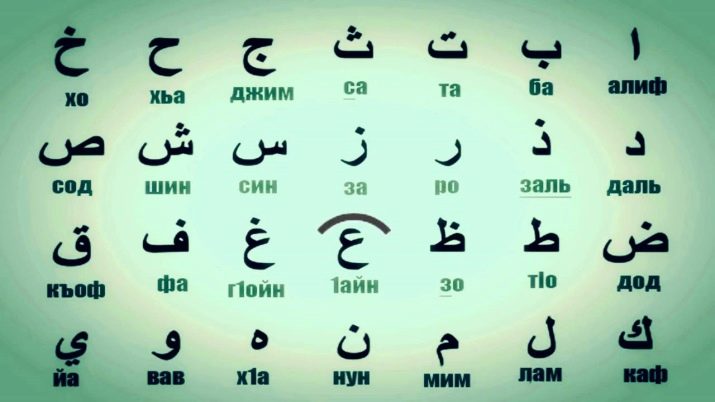
Korean
In many countries of the East, calligraphy was a real art that was passed down from generation to generation for hundreds of years. And Korean calligraphy is no exception - here the masters use the so-called hancha (hieroglyphs) and hangyl (phonetic alphabet) to create their masterpieces.

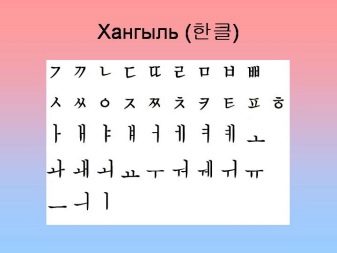
Just like in Japan, calligraphy appeared in Korean lands around the 3rd-4th century AD due to the widespread distribution of Chinese writing throughout the eastern territories. At the moment, the Korean writing system is significantly different from the Chinese, but only one thing is known for sure - here every sign, symbol and dash also carries a deep meaning and meaning.
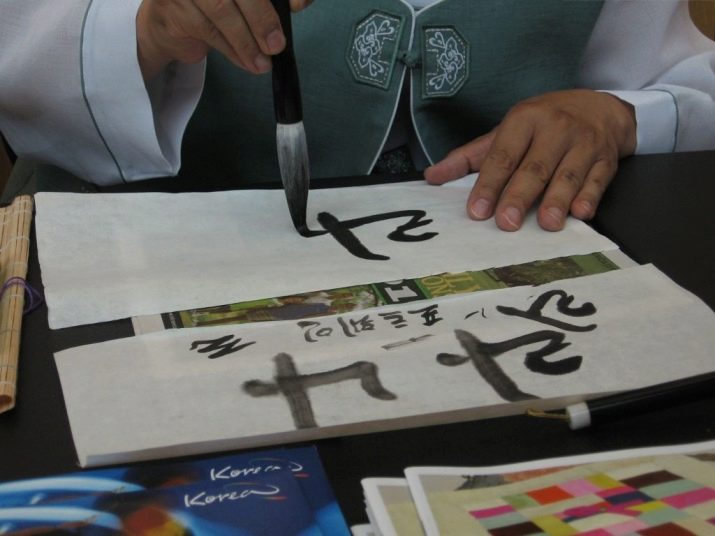
As early as 1,500 years ago, a couple of centuries after the introduction of Chinese writing, the writing style of ancient Korean calligraphers made it easy to understand what kind of activity they were engaged in. For scientists, the symbols of the language were strict, consistent and restrained, they symbolized practicality, completeness and regularity. DFor artists, the hieroglyphs of the Chinese alphabet were a bridge between the physical and the inner worldwhich allowed them to create quirky, light and laid-back symbols and words.
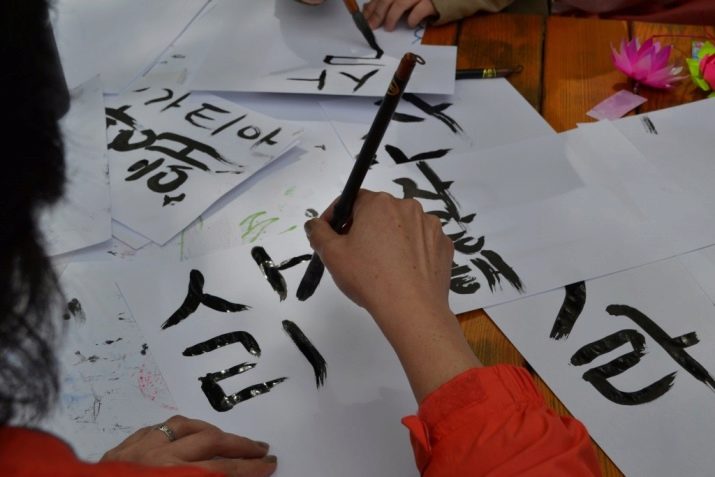
Excellent knowledge of calligraphy and writing spoke not only of a person's education, but also of his status. To study this complex art, it often took not months, but whole years, which only the wealthy members of society had in abundance.
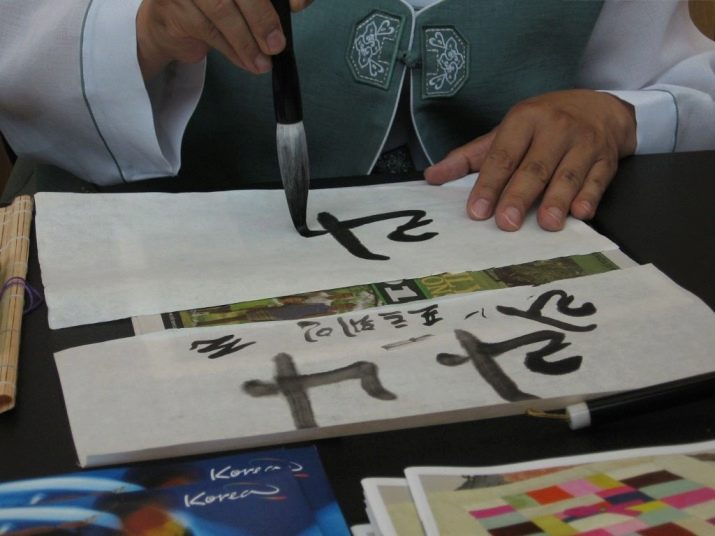
It is worth saying that calligraphy plays a very important role in Korean history. Almost immediately after the creation of the first higher educational institutions, calligraphy was introduced into the compulsory curriculum. And then, even in the first years of the existence of the Three States, in order to be accepted into government or military service, it was necessary to pass a number of certain tests. Depending on the type of service and position held, Korean residents had to show their knowledge of Chinese literature and poetry. In particular, the examinee was required to compose a poem on a specific topic, while it was necessary to choose the handwriting that would be more suitable for his topic.
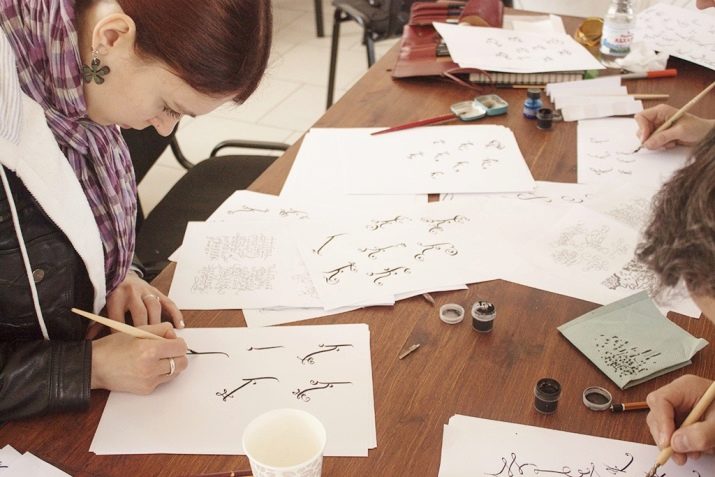
The introduction of such strict rules for entering the civil service has prompted many affluent Koreans to take up calligraphy studies. In addition to the main exam, additional writing examinations soon began to be held for those who wish to engage in census or writing of texts (scribes and scribes). Thus, in fact, knowledge of calligraphy allowed people to gradually achieve certain heights and move up the career ladder.
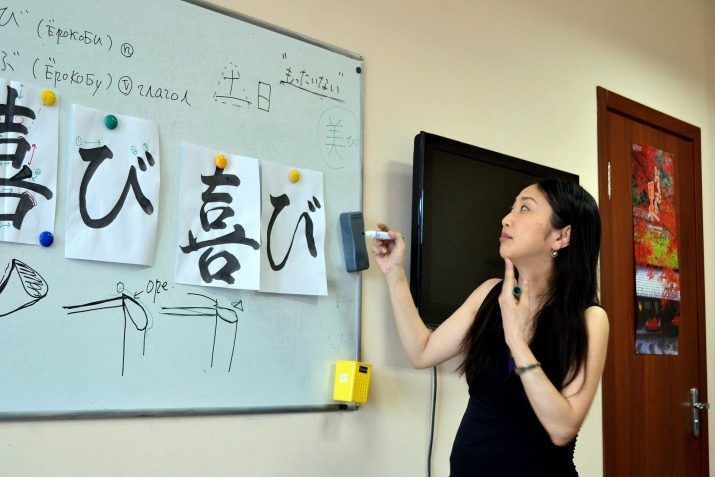
It should be said that the Chinese alphabet has long been a part of the Korean written culture, even despite the introduction in 1446 of its own national alphabet called Hangul. Until the end of the 19th century, Chinese writing was used at the highest level - in the preparation of official state and legal documents. In addition, Korean calligraphy has adopted the most important thing from the Chinese alphabet - the deep contextual meaning of symbols and letters. It was among the Korean people that calligraphy was able to unleash its potential as an aspect of art.
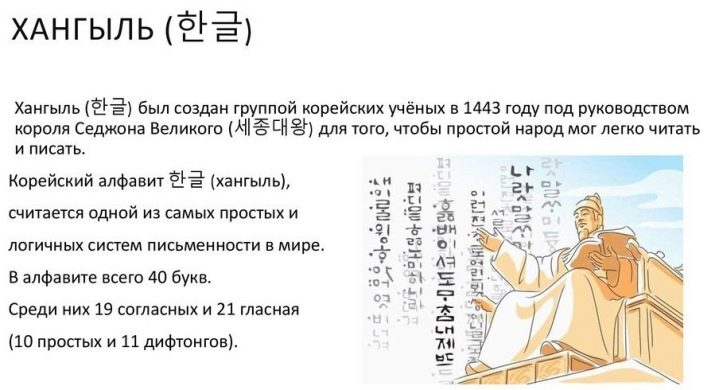
Some experts believe that young and inexperienced Korean artists were sent for primary training to calligraphy masters. It was believed that such training would not only discipline young people, but also inspire them, develop their creativity. There, students also passed certain exams, during which they were required to write a certain symbol or group of symbols. The assessment of what was written was carried out according to the same requirements as the assessment of a full-fledged picture: composition, selected shades, saturation and beauty of a stroke, individuality of images. Here, beauty was not at all in strict adherence to some dogmas or formulas, but in the general picture of what was written and the harmony of all the images that were part of it.

When it comes to the technique of Korean calligraphy, she gives more preference to creativity in writing: the ability to correctly prioritize images, choose an interesting composition and shape of a symbol. Despite the fact that some student calligraphers presented perfectly written symbols and images, they were often not admitted to the desired position solely because of the “emptiness” and mediocrity of the writing.

You shouldn't think that the technical component of Korean calligraphy was relegated to the last stage in the composition of texts - not at all. An ideal knowledge of the laws of arrangement and proportions was considered a priori mandatory, after which the master began to work on endowing his writing with images and individual beauty. To achieve this technique, some had to study the art of calligraphy for decades. The most important thing in this technique is the philosophical awareness of what is written, which comes only with extreme concentration and discipline.
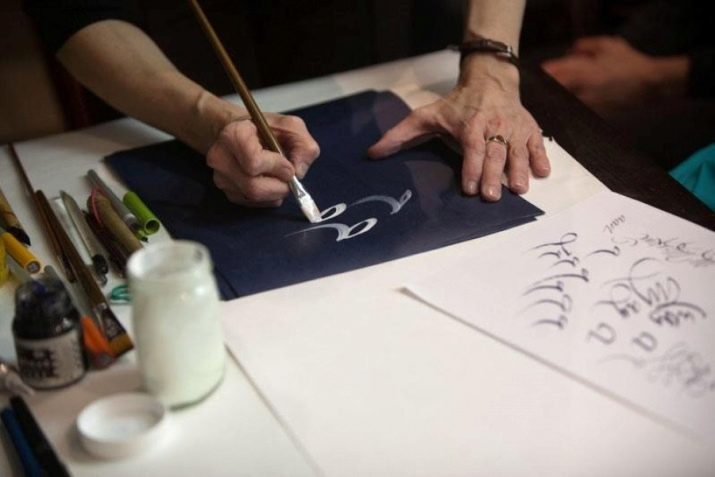
Like many other types of Korean arts, all calligraphy of this people is based on traditions, folklore, as well as on legends about the power and power of nature. The most experienced ancient calligraphers have always believed that any brushstroke, any stroke and symbol should carry a part of something alive and harmonious. - whether it be a feather of a bird, a branch of a tree, a sea wave or clouds. This is the main difference between Korean writing and modern typographic writing - a machine will never be able to fully convey an image or idea. The abstraction inherent in Korean calligraphy has made it an unlimited source of imagination for craftsmen and artists.

Turkish
Before the emergence of book printing in Turkey, calligraphy was the main method of text design and rewriting. The history and culture of this people are closely related to this art - it symbolizes freedom of expression, flight of thought and beauty. As in many other countries, Turkish calligraphy even in the Middle Ages became a full-fledged educational discipline, knowledge of which was necessary for many professions.

The history of the development of calligraphy in the Turkish lands is associated, first of all, with the improvement of the tools for calligraphy and writing techniques. Initially, bird pens and brushes were used for writing, then it was the turn of the stylus, and a little later - the fountain pen.
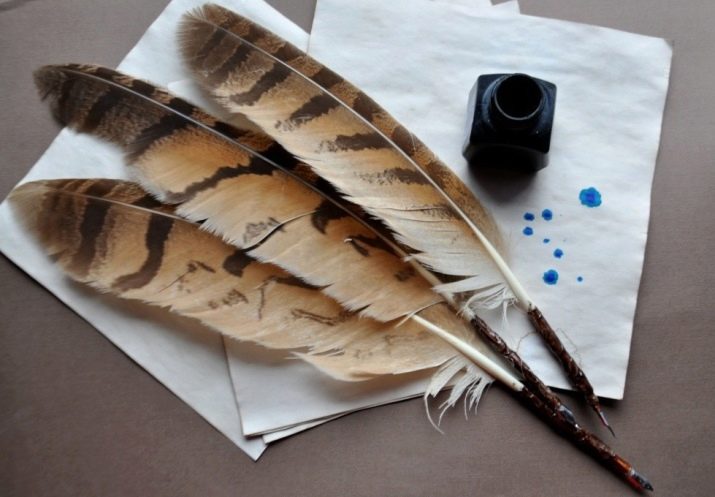
The first attempts to create individual calligraphy in Turkish lands appeared in the 7th-8th centuries AD, but Sheikh Hamdullah (1429-1518), one of the most experienced calligraphers of that time, had a profound influence on its development.
Until the end of the 19th century, Turkish calligraphy played a huge role in the entire picture of Islamic art.However, with the introduction of educational and writing reforms and the translation of the main part of the books into the Latin alphabet, some of the originality of this art was lost.

Like many Asian countries, Turkey is incredibly careful about its history and traditions. Since calligraphy has always played an essential role in them, Sultan Bayazit II decided to create the only calligraphy museum in Turkey in Istanbul. After that, Istanbul became the unofficial capital of all Islamic calligraphy. In the museum you can find old installations, scrolls and manuscripts, monograms symbolizing the spirit of medieval calligraphy. You can also find hundreds of unique calligraphic tools there.
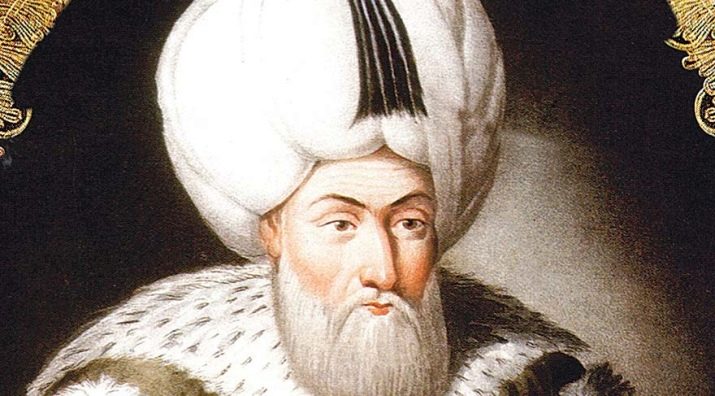
Initially, an ordinary reed nib was used as a tool for calligraphic writing; a little later, wood and metal were introduced into the production of such nibs at the base of nibs and holders. Today, most of these tools have been replaced by more modern nibs, as well as all kinds of pens (fountain pen, ballpoint). It was with the advent of ballpoint pens in Turkey that calligraphy became widespread among ordinary people. These handles were cheap, easy to handle, and quite flexible. Fountain pens became the property of wealthy people, acting as a kind of business accessory, without which it was impossible to go out.

European
This type of calligraphy combines several directions at once, which, however, are united by a common feature - all these styles began their development with the emergence of Christianity in European lands. The first calligraphic texts concerned precisely the census and translation of the sacred texts of the Bible and holy scriptures.

The peculiarity of this calligraphy was that it did not require any kind of inspiration or flight of imagination from its owner, here the beauty and value of what was written directly depended only on the skill of the calligrapher himself. Since the Bible needed to be rewritten and copied as soon as possible, the masters were not required to do anything other than an impeccable mastery of grammar and calligraphic dogmas.
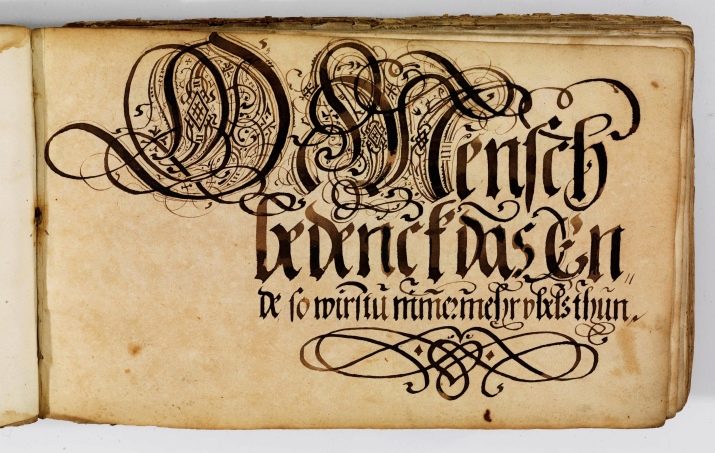
The most striking examples of European calligraphy can be found in the ornaments and writings of religious books, in the painting of temples, icons, attire of clergymen, and other religious accessories. The peculiarity of such calligraphy lies in the extreme rigor in the proportions of symbols and signs. Unlike East Asian calligraphy, additional author's decorations and images are rarely allowed here in compiling books and painting icons.
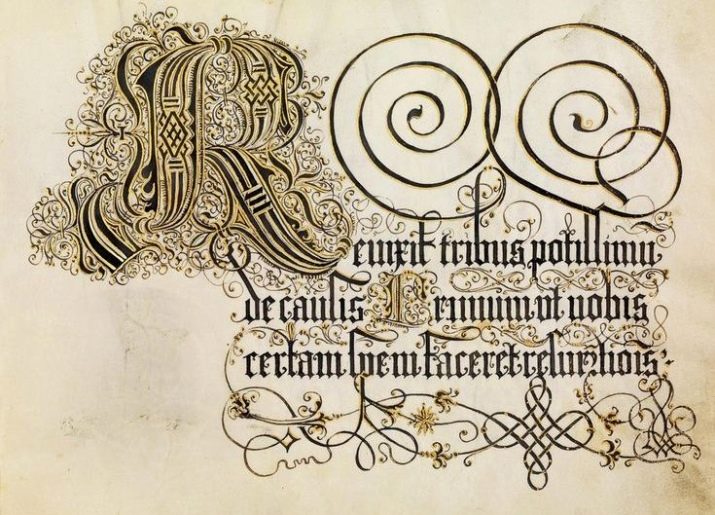
Tools and materials
To reach certain heights in calligraphy, you will need a lot of expensive tools that will not be easy to find in the city. Below you can familiarize yourself with the list of subjects that will be needed both at the stage of training and to achieve high results in calligraphy.
Feathers are classified into two distinct groups: pointed and broad-pointed.
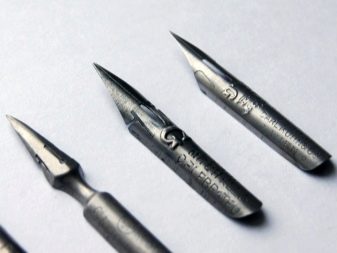

Broad-nib nibs are usually sold immediately with a quill holder (a kind of metal or plastic plate on top of the nib itself). If it is not there, then the extinguisher can be made independently from scrap materials. The most famous brands of broad-nib nibs are the following.
- Leonardt are considered the most budgetary and readily available nib option. Sold both in shops for artists, calligraphers, and on the Internet.
- The SpeedBall is a more expensive option for quality nibs with two quench holders. They are distinguished by convenience, flexibility and long service life.
- Brause & Co are professional hard nibs with a quench holder. The most expensive and high quality from this list due to the unique rigidity and durability.
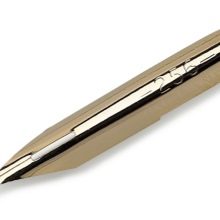
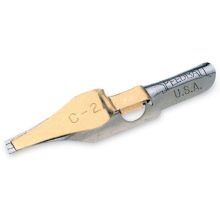
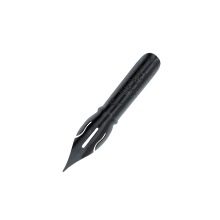
Calligraphy, like other forms of art, opens doors not only for right-handers, but also for those who are better at using the left hand.In these models, the bevel of the cut goes exactly from right to left, and not vice versa.
There are also universal wide-nib models for right-handed and left-handed people, such as the Pilot Parallel Pen. These Japanese-made nibs are automatic and feature a dense, wide cut. The slice size may vary depending on the writing style, you can find these nibs in sizes from 1 to 6 millimeters.

Pointed nibs require a certain pressure writing style. Such feathers have a special chip or split, which expands under the action of pressure, with the help of which wider or thinner lines are formed.
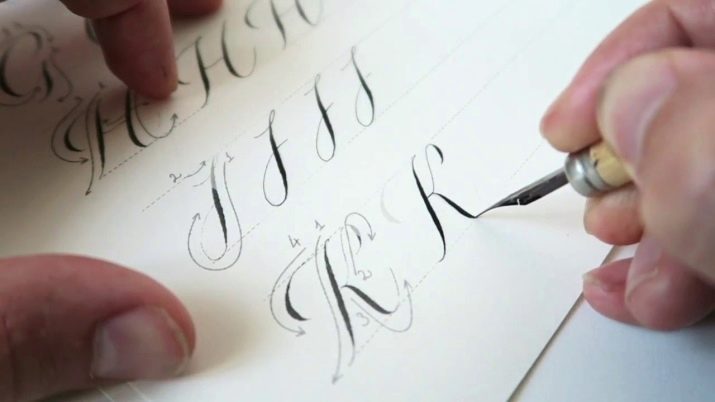
The most budgetary options are considered feathers "Zvezdochka" and Leonardt. They are not particularly flexible, but they serve for a long time and support most of the carcasses.
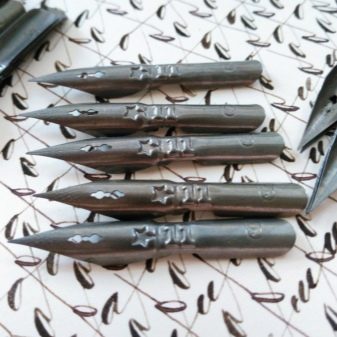
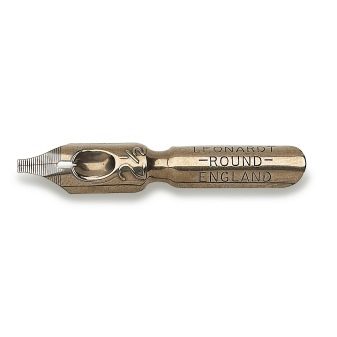
Ideal nibs for inexperienced calligraphers are the Brause Steno, Brause Rose, and Brause Extra Fine 66 models. These are pointed, comfortable and inexpensive feathers with a little split.
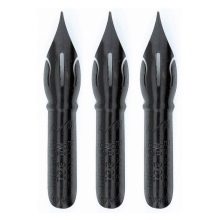
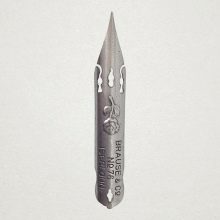
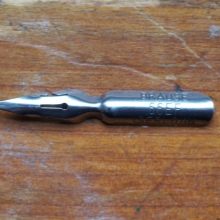
For those who want to get from work not only professional, but also aesthetic pleasure, special vintage nibs are on sale. By their structure, they are more plastic, soft and comfortable, with the help of them it is easy to learn how to write beautifully. They are also often decorated with many bizarre signs, serifs and prints that seem to take you back to the Middle Ages. Such feathers, due to their delicate and soft structure, very often break and are very expensive in themselves.
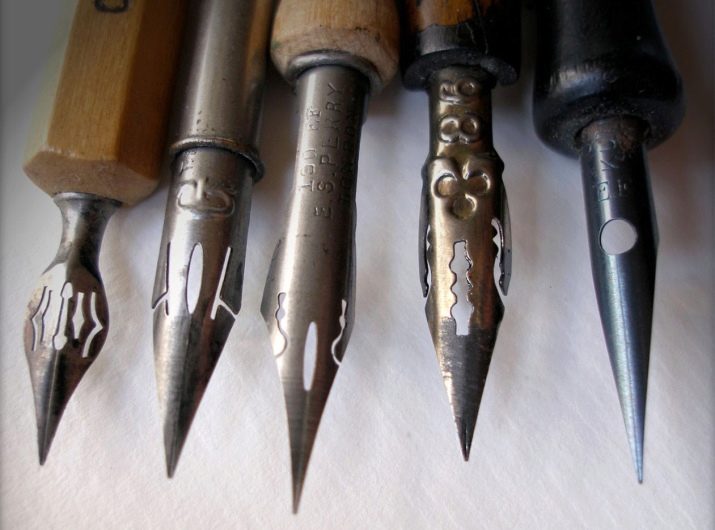
Once you've got the pens, paper, and other tools, you can start refueling them. Surely many of you have seen how such pens are refueled in films - the actors simply dipped them into inkpots and immediately began to write. However, modern calligraphy experts recommend refilling them by soaking the nib with a brush or cloth so you can accurately track the amount of ink that enters the nib. This will save you from unwanted specks and burrs.
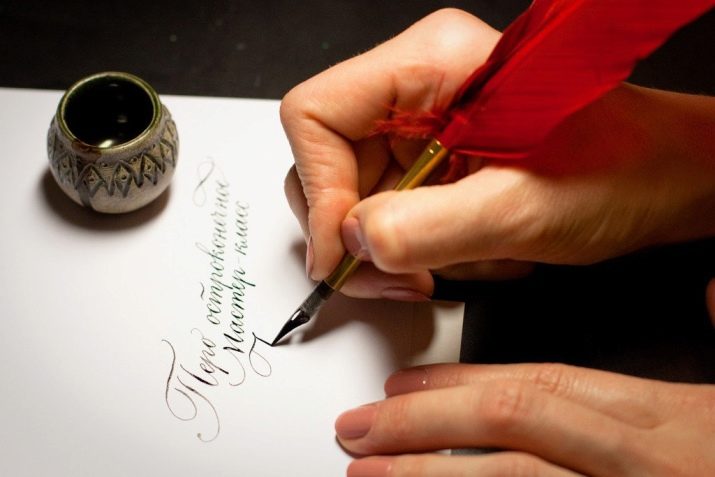
Holders are divided into straight and oblique, depending on the style of writing and nib. So, oblique holders are used in conjunction with pointed nibs. In this case, it is easier for calligraphers to maintain an inclination of 55 degrees without turning the sheet of paper. Straight holders are more common - they are cheaper, easier to place nibs in and clean.
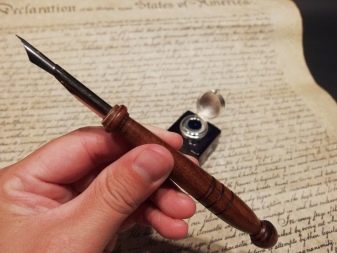
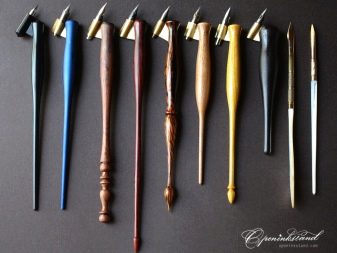
Considered a cheaper, but less reliable and durable replacement for nibs, brushes are also used to refill the nibs themselves. By analogy with feathers, they are divided into two types: pointed (brushes with a round base) and broad-pointed (brushes with a flat base). The advantage of brushes is that they are easier to control than feathers, they are more flexible, they easily follow the movements of the master. They also have their drawbacks - from repeated use, hairs fall out of the brushes, which is why the tools have to be changed regularly. The best brush for calligraphy is considered to be Chinese natural hair brushes.


The officer's ruler is an essential writing tool. Calligraphy strictly monitors the observance of proportions in the letter, so beginners at first will have to carefully line the paper for future designs. In addition, you can find ruled calligraphy albums on sale.

Not only the harmony of the drawing itself depends on the correctly selected paper, but also the convenience of calligraphic writing. On thin, loose and fragile paper, ink can run and seep out. Since quality calligraphy paper is quite expensive, aspiring calligraphers can practice on regular office paper. For more professional work, you will need paper with a density of at least 120 grams, and preferably 130 or more. Some artisans prefer extremely thick paper to achieve unusual "torn" and "broken" lines.
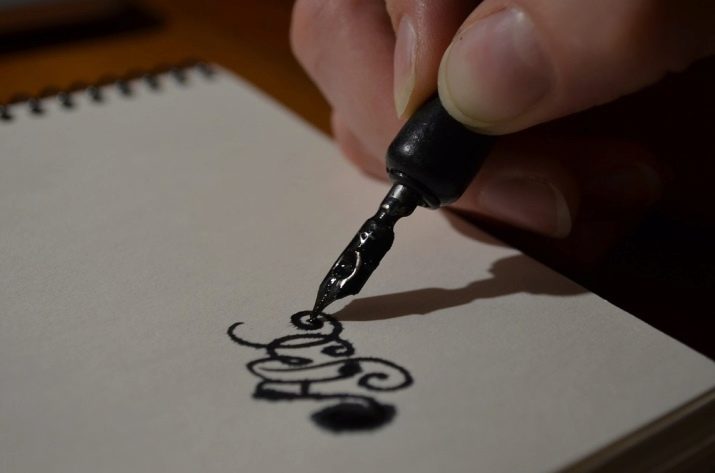
Buying expensive ink does not guarantee you a neat and correct letter, but it will make it more beautiful and harmonious. The classic version of mascara for beginners is a product of the brand "Gamma" - it is sold in many stores in the CIS countries. Later you can switch to more expensive mascaras like Koh-I-Noor. Some beginners immediately buy professional expensive mascaras, but the latter are usually very thick, which is why the feathers need to be regularly cleaned and the mascara itself diluted.
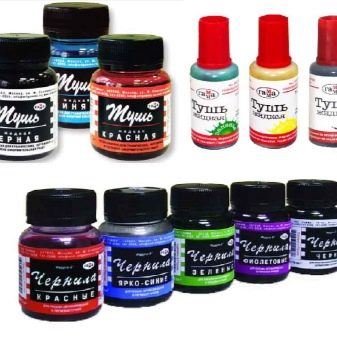

Water will help you quickly clean up excess ink from the nib and will also thin out overly thick ink. After rinsing the nib, wipe it thoroughly with a cloth to prevent water from spilling onto the paper or the ink bottle. It is worth changing the water in a mug about once every 10 minutes.
Today, there are many third-party tools that allow you to make lines in writing clearer, more unusual, or smoother. A common element of such tools is the regular drawing pen - it is often used by architects to create blueprints. For colorful and creative calligraphy, some artists prefer to use special wide markers. The great thing about these tools is that you don't have to deal with preparing, cleaning and filling the nibs.


For more creative and unusual designs and symbols, calligraphers can use a variety of tools: charcoal, pastel, watercolor, gouache, ink, and even spray paint.
How to learn?
There is a widespread belief that calligraphy requires from a person not only some skill, but also talent. Experts, however, fundamentally disagree with this statement and tend to think that this art largely depends on skill and experience. Hence, even people with the most terrible handwriting, in their opinion, are able to learn the basics of calligraphy... Modern calligraphy is especially popular today - it does not require a beginner or a master to follow any clear rules and opens up scope for imagination and individuality.
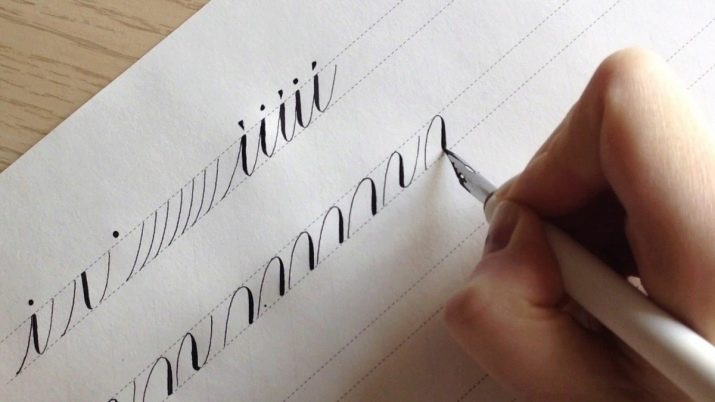
The first step towards learning calligraphy is the so-called "fake calligraphy". These are a kind of introductory lessons in calligraphy that will help you to correctly hold a pen and comprehend the very essence of such a letter. It got its name "fake" because it does not require a fountain pen or expensive ink from the master - the work can be performed with an ordinary ballpoint pen, felt-tip pens or pencils. It should be noted right away that this writing technique can help not only beginners, but also experienced calligraphers - you may have missed something from your first lessons.

Unfortunately, this method of learning will take more time than if you were training with a regular fountain pen, but it will seem more fun and clearly show what is special about calligraphic writing. Below you can find step-by-step instructions on how to create your very first calligraphic phrase or word.
- Take an ordinary A4 sheet of paper, and then, in the most accurate handwriting, write on it some phrase or word in italics, leaving a small distance between the letters. Try to keep the proportions of the letters in the word approximately the same - for convenience, you can draw the sheet with a ruler.
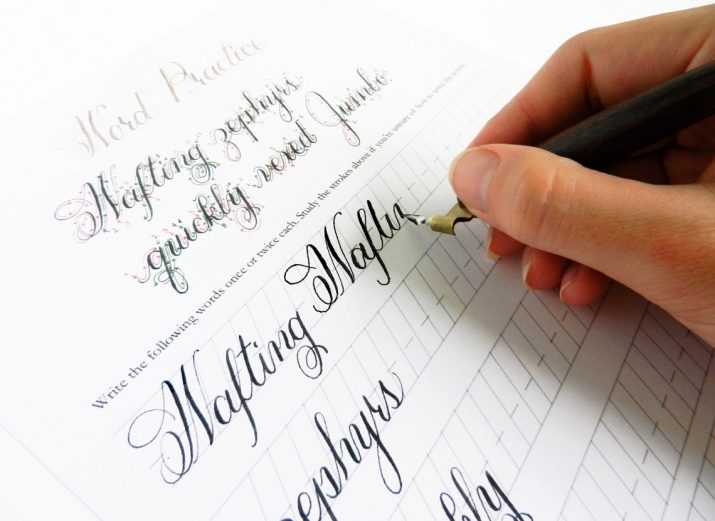
- Then it is worth marking in words the lines that will succumb to thickening. Typically, these are the left or right sides in italic letters that appear as you move downward as you write the letter. Move slowly, trying to keep strictly symmetrical and parallel lines. Make sure that the lines of the bulges do not differ in size in the same letters.
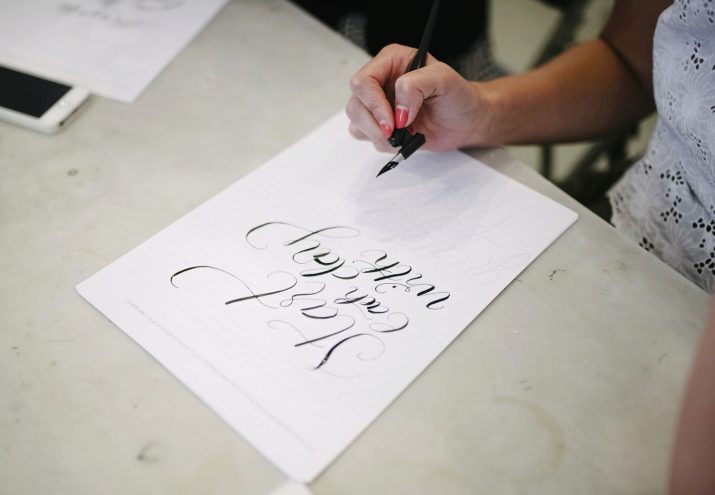
- After each letter has been indicated by its thickened lines, simply fill in the resulting empty space as neatly as possible and without going over the edges. You can paint over with a pen, felt-tip pen, brush or feather.
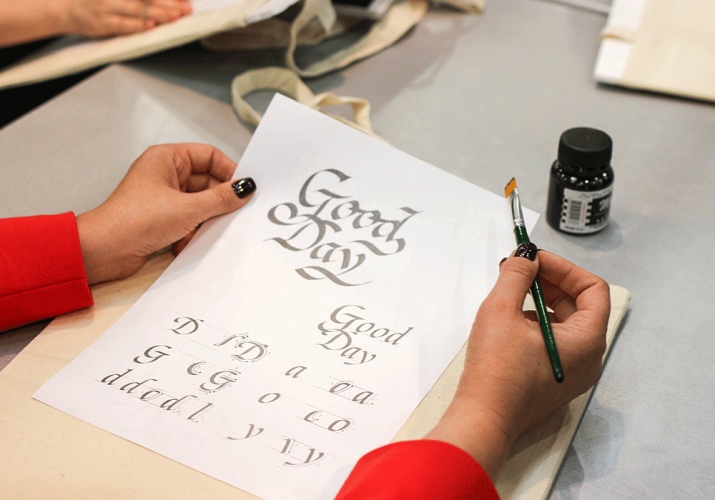
- Try not to dwell on one phrase or word. Once you understand that you have learned how to write and fill out the selected phrase, turn to more complex words with the content of previously unused letters.
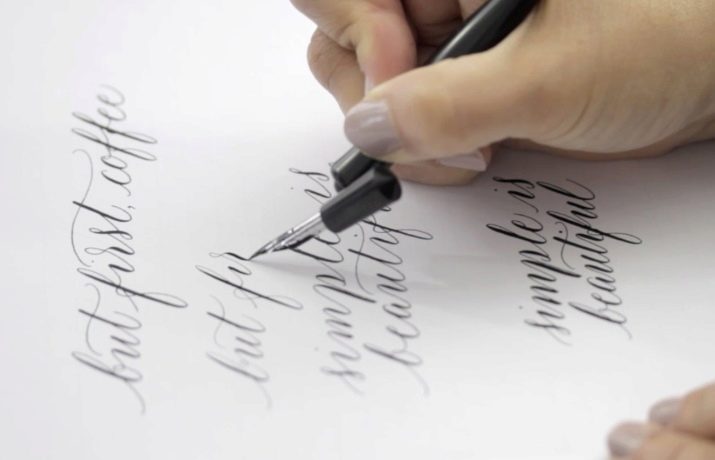
- Complicate tasks by trying to thicken the whole text, turn to new ways of italic writing, change the stylistic features of the chosen type of calligraphy, try adding additional graphic elements in the form of squiggles, fancy commas, patterns, elegant underlines.

- If the first trainings should be carried out exclusively with large italic letters, then with the complication of the entire course it is worth switching to medium and small print. The smaller the words are in size, the more difficult it will be for you to follow the movements, the more attention you will need to pay to any particular letter.
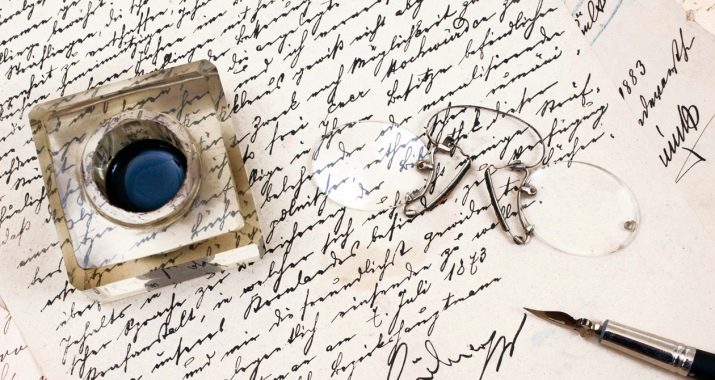
- Once you find that ballpoint pen calligraphy is easy for you, you should move on to more professional writing tools. The first step is to get pen holders - they help to fix the pen in the desired position, as well as fill it with paint more efficiently. For starters, use plastic holders that you can make yourself. Beginners should choose a straight holder; for more experienced calligraphers, oblique ones may also work. Note that the nib in the holder is not in the middle, but between the top metal petals and the rim.
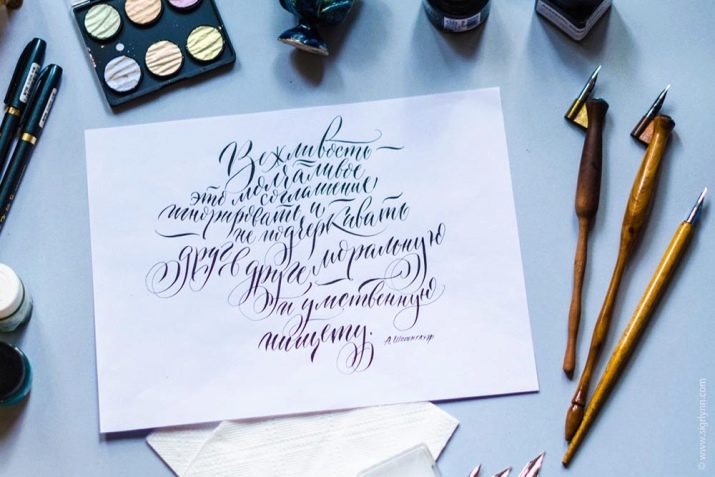
- After that, consider purchasing quality ink, paint or ink. At first, it is better to choose convenient and practical products rather than professional and expensive ones.
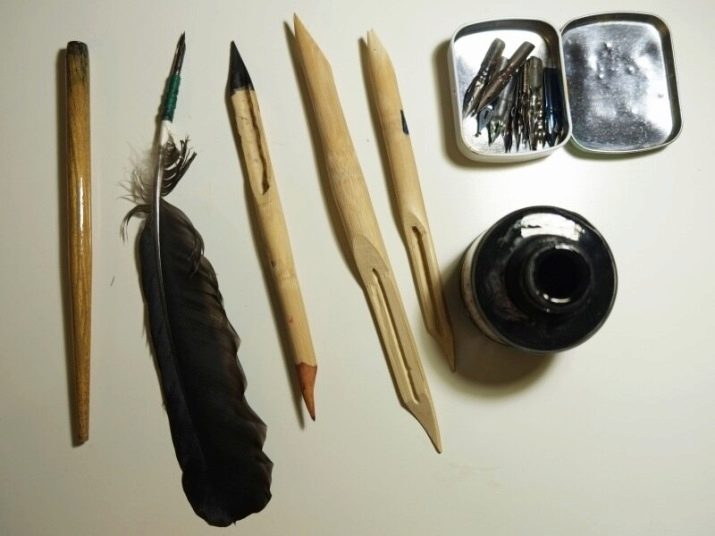
- The selection of professional paper for calligraphy is the next important step in training. Please note that it will be much easier for you to write on ordinary sheets with a density of no more than 80 grams than on professional canvases with a density of 120 or more grams. Such sheets are stiffer, stronger and do not fit well under the hand of an inexperienced calligrapher. To determine the quality and density of the paper, it is enough to make a couple of strokes on it with a pen. If the oa is strong and of high quality, the strokes will be clear with strict boundaries, but if not, the ink and ink will spread throughout the paper and leave characteristic cobwebs.
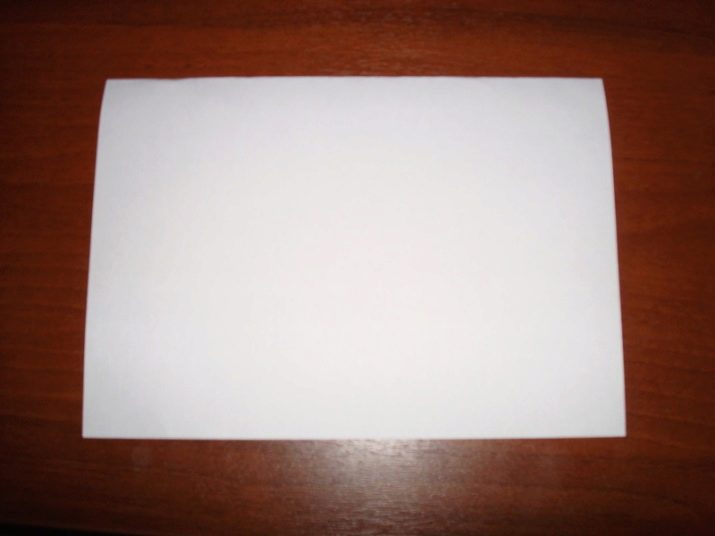
- You should always hold the pen holder by the middle, while trying not to touch the tip itself - there is a great chance of getting hurt or getting dirty. Holding a calligraphic pen correctly is no big deal. Modern standards allow craftsmen to hold it in the same way as a pen - with the index and thumb, where the middle and little fingers perform a supporting and fixing function. The difference between ballpoint and nib writing is that ballpoint pens require a certain amount of pressure to leave a mark on the paper. The pen should be held lightly, and the movements of the hand with the feather should be smooth, quick and soft. Excessive pressure can cause the pen tip to catch on the paper, creating splashes, or even bend.

- There are situations when ink or ink does not want to go from pen to paper. This can be affected by the quality of the ink, improper refills, and the quality of the paper itself. To trick the system, simply dip the tip of the pen into water and the ink should slide freely across the canvas.
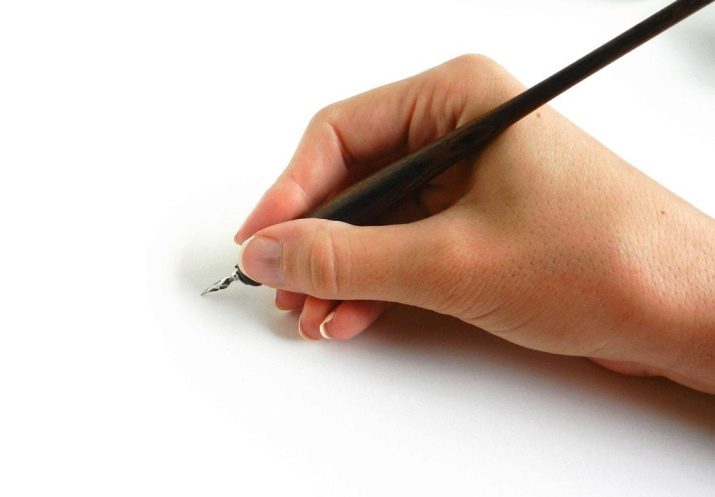
- After each workout, try to thoroughly rinse and wipe the ink off the nib, do not let the ink dry or rust the nib. Use a lint-free or lint-free cloth to clean and dry the pen.
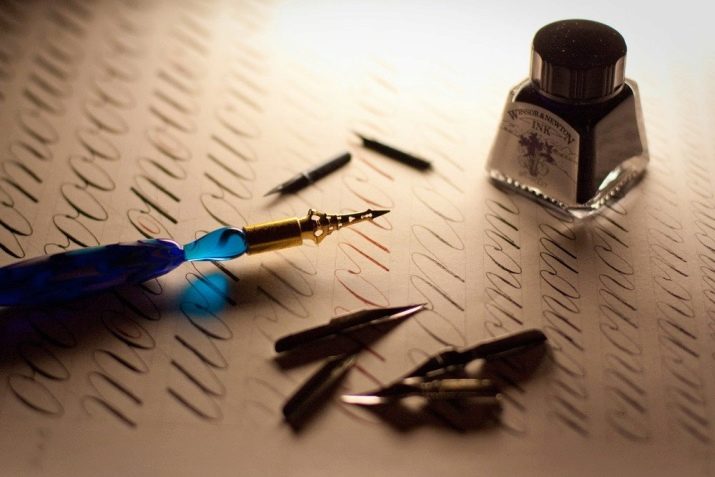
Some experts recommend that beginners practice using calligraphic scales. Most often they are presented in the form of albums with tasks for writing or coloring certain characters. Many people disdain these exercises for beginners, which will pay in the future.Typically, inadequate preparation and unfair learning of the basics lead to crooked fonts, incorrect rhythms and disproportionate letter spacing. Scale training teaches calligraphy from the very beginning - from symbols and dashes to whole inscriptions and texts.
Typically used in the training of aspiring musicians, these scales prove once again the creative nature of calligraphy and the importance of self-organization to achieve the highest level of writing.

Basic calligraphy exercises in the video below.







